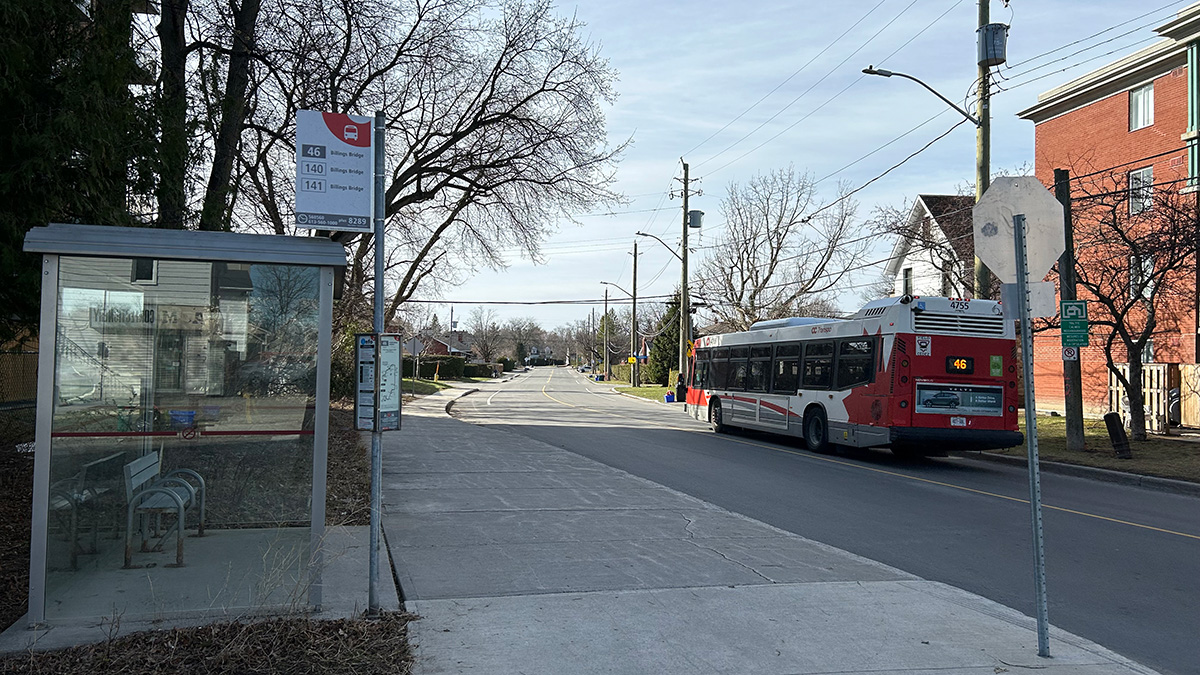Transit advocates in Ottawa say major changes to OC Transpo’s bus system involve too many cuts and will not help restore ridership on the system, which has not recovered from the COVID-19 pandemic.
“The overhaul is actually part of service cuts, and the city is trying to sell it as something else,” said Sam Hersh, a board member of the watchdog organization Horizon Ottawa.
“They are cutting a route here, adding a route here and extending a route there, but in reality, they are cutting 74,000 hours of service, and they are cutting three and a half per cent of all bus service across the city.”
OC Transpo’s ‘New Ways to Bus’ route realignment is to begin once the Trillium line of the O-Train (Lines 2 and 4) is running sometime later this year. OC Transpo general manager Renée Amilcar told a recent Transit Commission meeting that she still wasn’t able to commit to a firm date.
Hersh said what Ottawa transit needs is more investment, adding that the city’s approach will make things worse.
Last month, Premier Doug Ford announced a $543 million commitment to Ottawa over 10 years for housing, public safety, roads, and downtown revitalization. Although Ford promised $80 million to cover a third of the cost for the proposed Kanata North Transitway, there was no reference to funds for public transit operations.
“You are telling me that you can get $543 million, but you cannot put any money into the transit budget?” asked Hersh.
“They said there is a problem with public transit because ridership is low. Make transit better people will ride.”
Barrhaven East Coun. Wilson Lo, a member of the Transit Commission committee and a former OC Transpo bus operator, said he is hopeful the changes will help address some of the challenges facing the transit authority, many of which are long-standing.
“A lot of the problems the realignment addresses have actually been present since before the pandemic,” said Lo.
“It was just made worse by the pandemic and really highlighted the fact that we needed to reorient the system to service people who don’t commute Monday to Friday, nine to five.”
Specifically, the city says it will try to reorient the transit system to make local service and suburb-to-suburb service more accessible and effective. They do not want it to be burdensome to use public transit.
“We’ve never been good at providing local service or service to less traditional trip generators. The hope is that Carleton will be better served, for example. You can get around Barrhaven easily. You can get around Kanata easily. You can get around between the two easily,” said Lo.
But the changes will likely inconvenience some riders, Lo said. People commuting to and from downtown will be affected the most. As well, there will be minor route tweaks that will have bus routes further away. However, there will also be bus tweaks that will bring bus service closer to people.
Routes that will have no change to their routing


According to OCTranspo
“The new network, even though by numbers it represents a service cut, a lot of those service hours are moving into the much more frequent Line 2. There’s still a net reduction in service, but Line 2 is going to be a major addition to our transit network,” said Lo.
The overhaul plan comes after the city cut $47 million from the capital budget of OC Transpo, including taking out of service — without replacement — 117 buses in poor condition. Since then, the Ottawa Coalition for a People’s Budget, a broad alliance of individuals and community groups, has raised the alarm over the erosion of the public system. The coalition includes organizations such as Horizon Ottawa, and Ottawa Transit Riders.
Oscar Dennis, a member of Ottawa Transit Riders, echoed Hersh’s comments. Dennis pointed out that frustration over public transit has been mounting in Ottawa year after year.
“The city council is focusing on an austerity approach. That is not going to help transit. Instead, problems are going to grow,” said Dennis.
Dennis said Ottawa should have more buses, and more frequent routes that go to places people actually want to go to.
But this is easier said than done, according to Lo.
“Right now the biggest hurdle to our reliability is the fact that we don’t have enough operators, enough buses to run our existing service,” said Lo.
“It’s roughly two per cent of our trips that are not delivered at all — completely cancelled. Two per cent doesn’t sound like a lot but during rush hour, that’s a lot of trips. And these are mostly during rush hour,” he said.
Members of Horizon Ottawa, and Ottawa Transit Riders have repeated that Ottawa should have free public transit, an issue that arises regularly, yet there is a question whether it is realistic.
“We’re still paying for decisions that were made leading up to the light rail launch,” said Lo. “Right now we don’t even have the resources to run our current network.”
“People often make this argument that it’s about reliability versus affordability. I think both things go hand in hand and I don’t think it’s an either-or. It’s just a question of spending the money the correct way, which is not what our city is doing,” said Hersh.
“I think having free public transit is realistic yesterday. It is not about having the resources; it is about having the priorities.”




